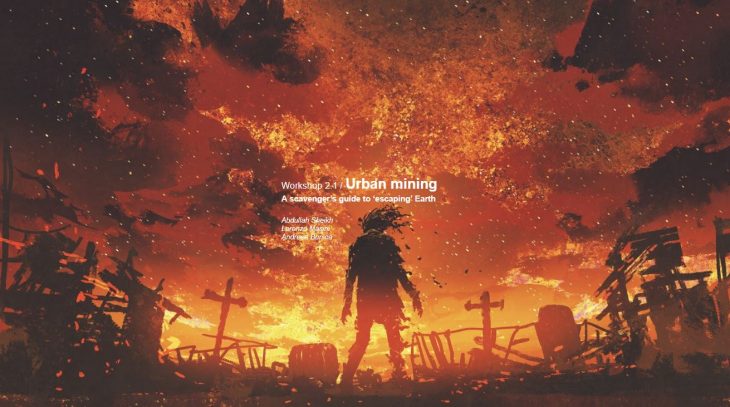
*project developed as part of MRAC W2.1 Urban Mining 2019/2020
The year was 2050.
Earth’s sky was patched with hues of blue and green, melting into a thick cloud of dark orange in the dusk light. In between depleted monsters of concrete and steel- skyscrapers, as they were once called- Max hid in his make-do shelter, planning his escape. He had to escape Earth- before the next storm hit. Tomorrow was the day- one last mission.
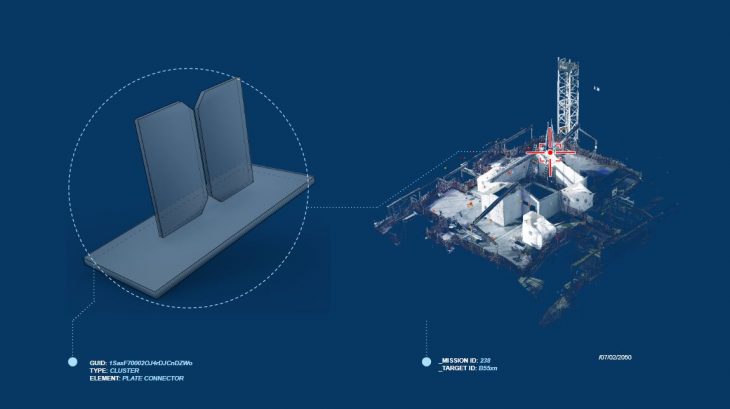
In a dystopian future where all finite resources have been contaminated through exhaustive exposure to solar storms, steel plate connectors- commodities, once used on building sites everywhere on Planet Earth, have now become valuable assets; concealed in-between beams, columns and remnants of concrete, the plates are the only pure material that can be used for building solar shelters.
MISSION/ prepare:
For each scavenging mission, HUD data about the plates being mined is extracted, in order to localize the metal plates and extract information about their position, clusterization, connection to other building components and accessibility. These information serve as precursors for map and mission planning, in order to optimize the extraction of non-contamined material.
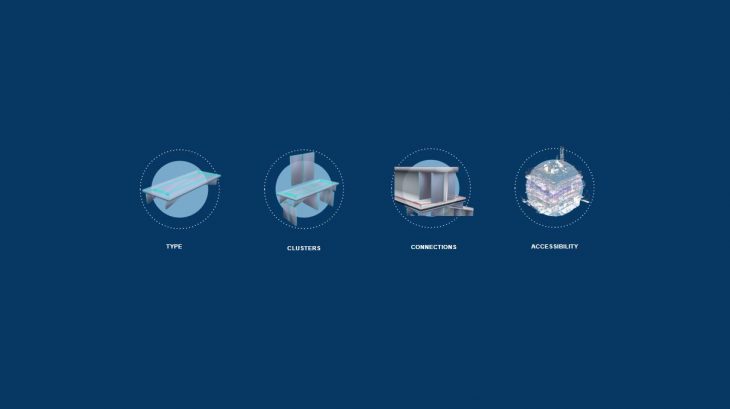
SYSTEM/ architecture:
Starting from available information – segmented pointcloud representing the existing state of abandoned buildings, and BIM models of the initial state of the building, information is extracted through cross referencing the two available resources, in order to extract data about the quantity, quality and accessibility of the plates.
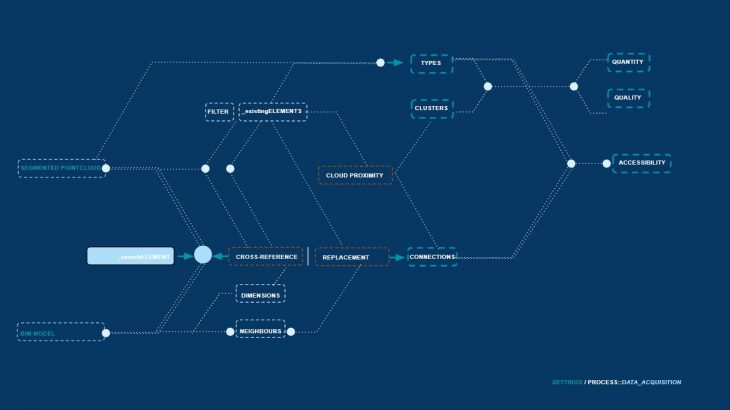
TARGET/ abandoned building:
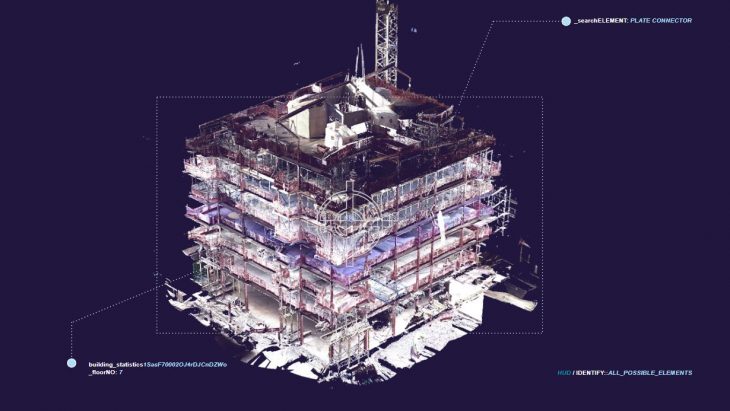
STRATEGY/ pointcloud alignment:
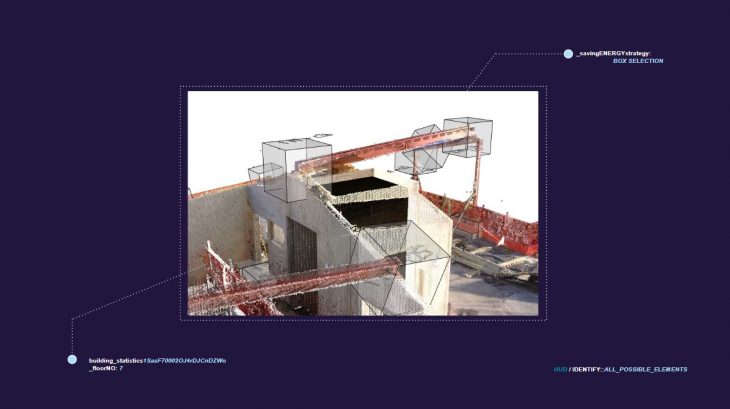
Real-life plates existing in the pointcloud and their positions are being determined through referencing the pointcloud objects to the original BIM model objects. The system assigns a bounding box corresponding to each BIM plate element, and then searches for corresponding pointcloud elements, extracting only the pointcloud clusters corresponding to plates.

/existing plates per level
This information is then used for path planning and optimization of the scavenging trip.
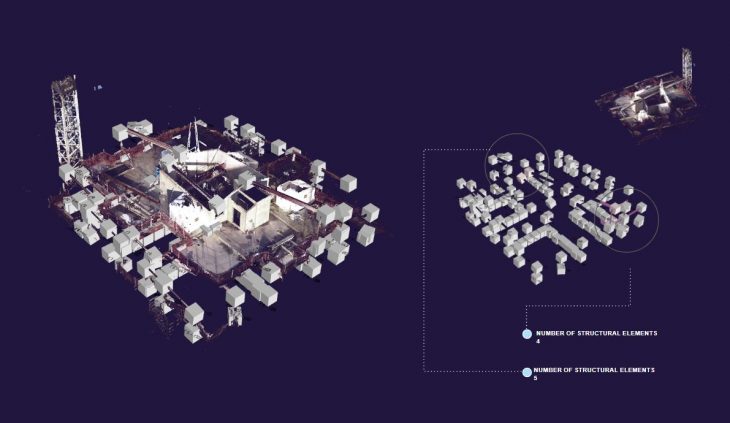
CLASSIFICATION/ design elements:
The found plates are then classified in types, sorting them in preparation for integrating them in running design projects.
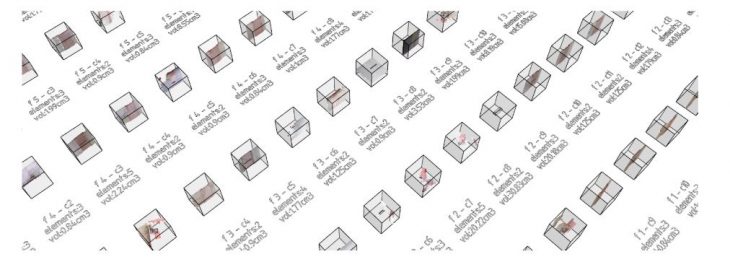
/classification and labeling of existing plates
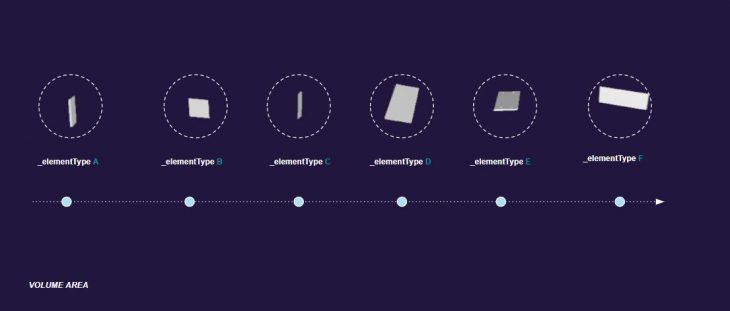
REPURPOSE/ survival methods:
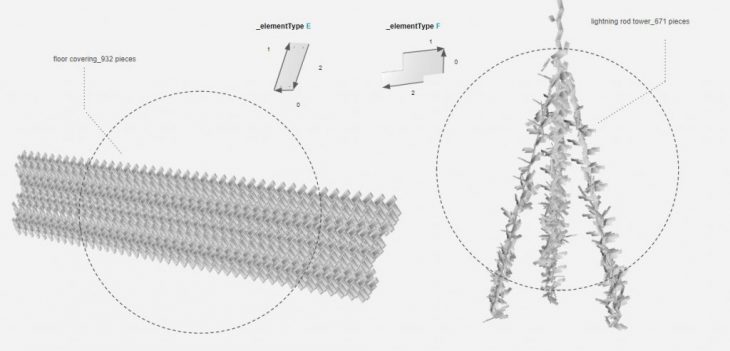
The scavenged plates are then used for producing items necessary for survival- in his journey to escaping Earth, Max has been collecting and assembling plates, patching his solar storm shelter, building excavation tools and constructing a lightning rod in order to source electricity.
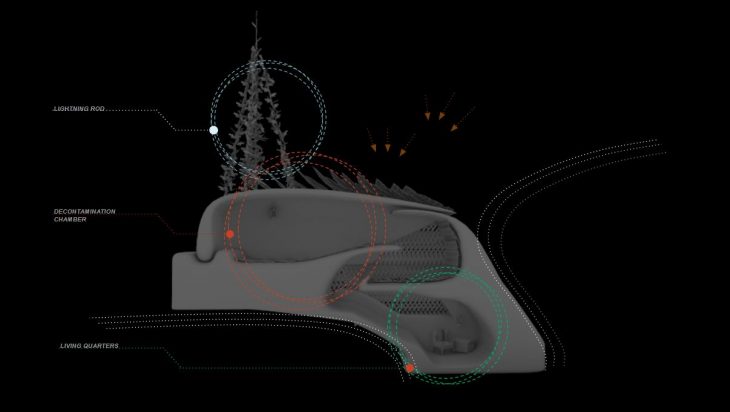
THE END
‘Escaping’ Earth- running towards the depth of the underground, amidst the fire of the solar storm.
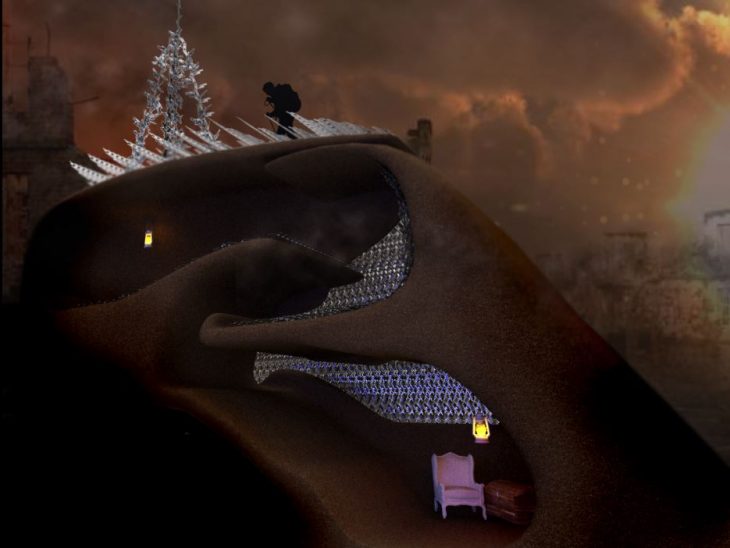
Max’s house, 2050